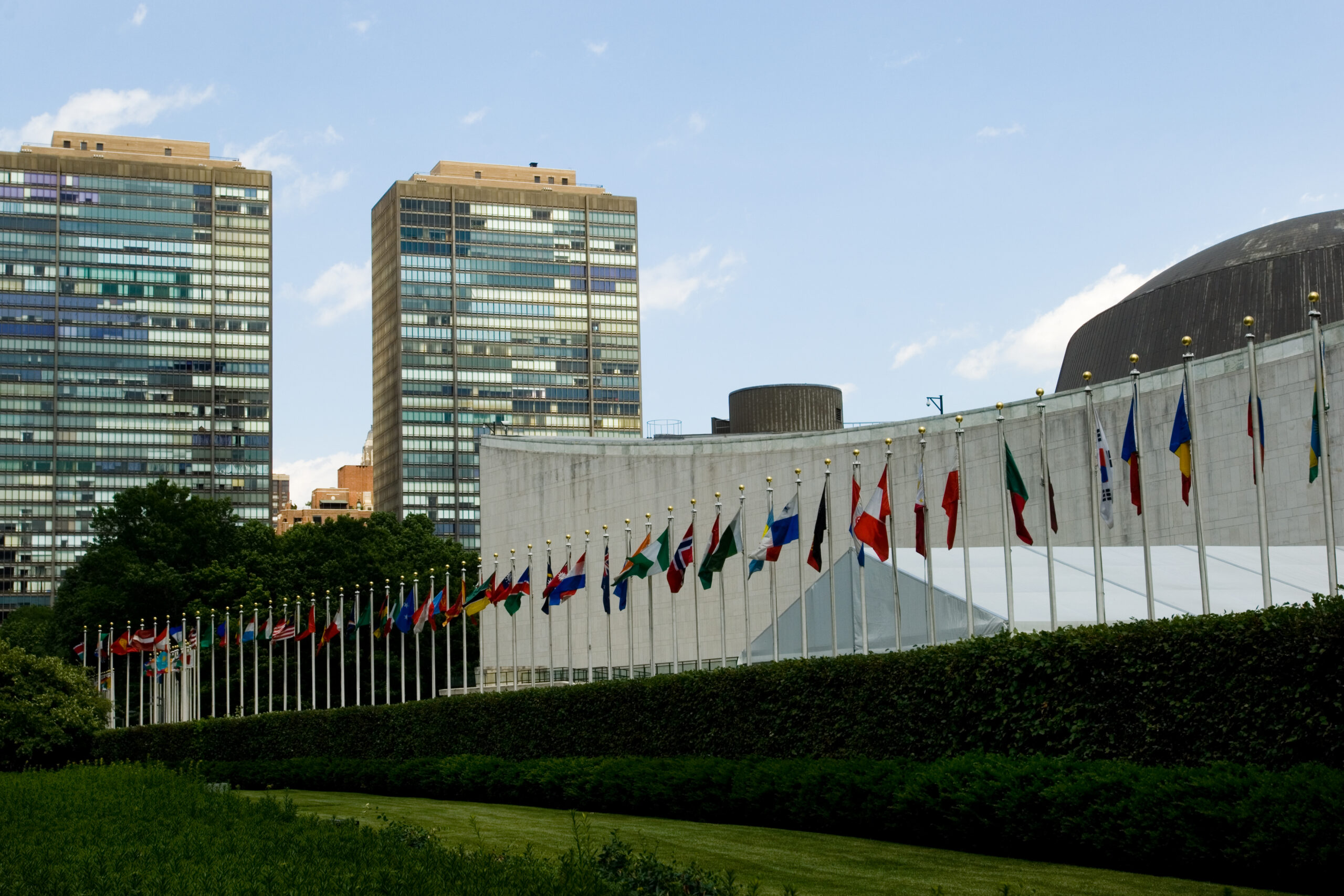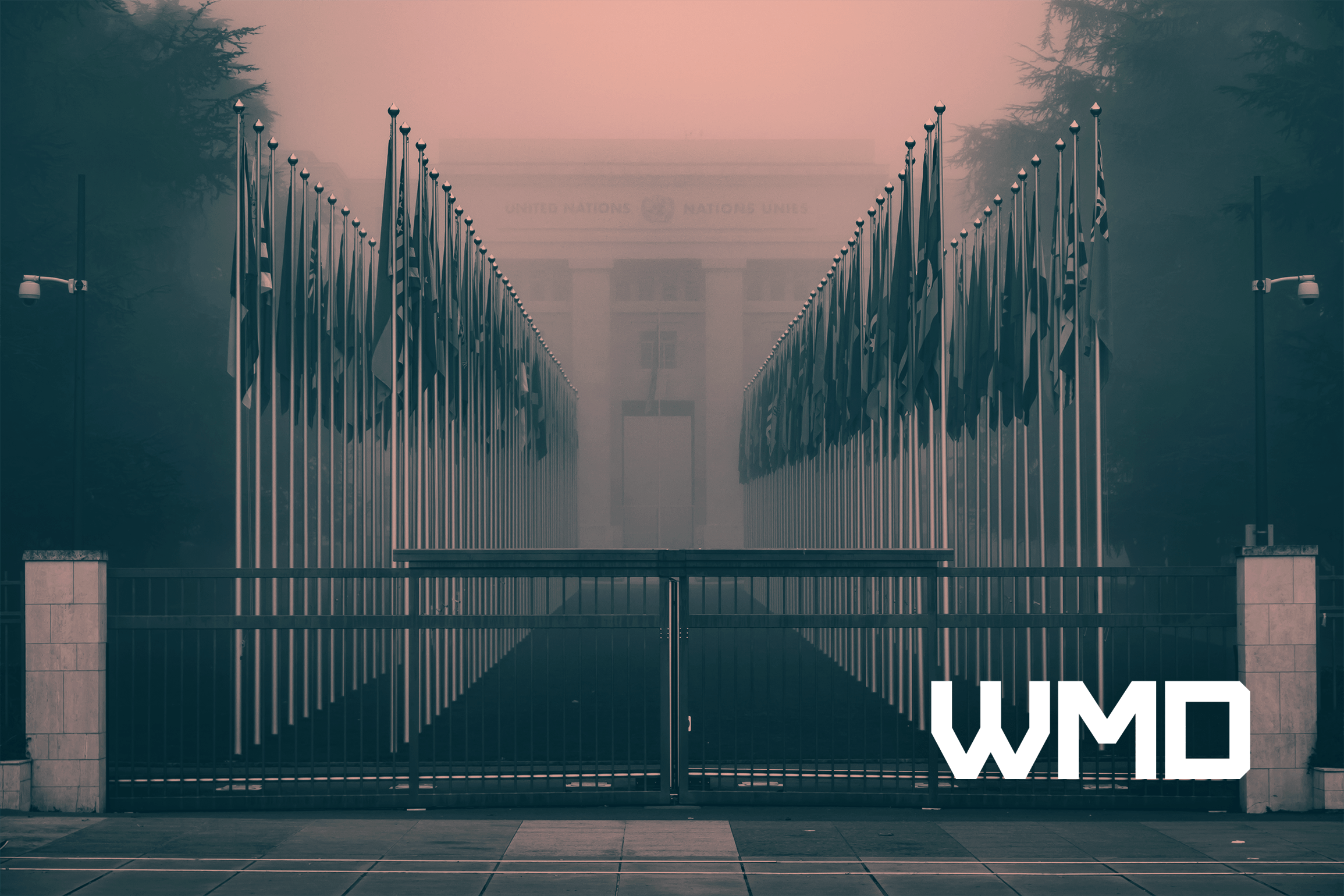The Tenth NPT Review Conference: Constraints and Possibilities in August 2022
Originally due to be held in May 2020, the nuclear Non-Proliferation Treaty’s (NPT) Tenth Review Conference is now scheduled for August 2022. This means that its delegates will meet after a prolonged absence, during which there have been several controversial developments, and that the usual business covered in Review Conferences in the normal five-yearly cycle is bound to be increased proportionately. This is bound to be one of the most important Review Conferences, as so much has happened since NPT states parties last met.
Key developments since 2015 which will affect the Tenth Review Conference of the NPT:
Humanitarianism has been embedded explicitly into the nuclear weapons debate. The Ninth NPT Review Conference in 2015 ended in acrimony when the treaty’s nuclear weapons states (NWS) and non-nuclear weapon states (NNWS) failed to reach agreement on how to move disarmament forwards. That Conference occurred just after many NNWS concluded a series of three conferences examining the Humanitarian Impacts of Nuclear Weapons. In turn, the catalyst for those three conferences had been the consensus document released at the Eighth NPT Review Conference in 2010, which read “The Conference expresses its deep concern at the catastrophic humanitarian consequences of any use of nuclear weapons and reaffirms the need for all States at all times to comply with applicable international law, including international humanitarian law.” Given this history, where humanitarianism had become inserted firmly into the nuclear debate at the insistence of the NNWS, the Tenth NPT Review Conference to be held in 2022 is bound to raise expectations about the nuclear states’ obligations towards disarmament.
A new treaty, prohibiting nuclear weapons, has entered into force. The incorporation of this humanitarian perspective led to the creation in 2017 of the United Nations Treaty on the Prohibition of Nuclear Weapons (TPNW). For the first time in the history of the nuclear age, a large number of states voted in favour of a treaty which makes nuclear weapons illegal for all states (and not just for the non-nuclear weapon states, as the NPT does) on the basis of International Humanitarian Law. The TPNW entered into force on 22 January 2021. The existence of this treaty, which currently has 86 signatories, is bound to change the dynamic of the conversations during NPT Review Conferences. The treaty flows logically from NPT requirements that all states have a responsibility to further disarmament measures as specified in Article VI, but none of the nuclear weapon states, or their close allies, have signed it. The NPT NWS remain hostile towards it.
The first Meeting of States Parties to the TPNW will be held in March 2022. Not only has the TPNW entered into force, but its signatories will also have held their first meeting of states parties (MSP1) in Vienna in March 2022, five months before the Tenth NPT Review Conference. MSP1 consolidates the presence of the TPNW, and its proceedings are likely to rally non-nuclear states to hold the NWS even more accountable for their actions than they might normally do within NPT debates. It is also significant that two NATO members, Germany and Norway, have announced that they will attend the MSP1. Their willingness to do so stands in contrast to US pressure which urges all allies to reject completely the TPNW and its accompanying measures.
Strategic instability is growing and constraints have been rolled back or eliminated altogether. Nuclear and non-nuclear states are united in their views that strategic relations between the major powers have deteriorated in recent years, and that the risk of nuclear war or nuclear accidents has risen since 2015. During this same time, cooperative activities among the NPT nuclear weapon states have all but vanished, with several nuclear and conventional weapon agreements and practices discarded since 2015. These include the Intermediate Nuclear Forces (INF) treaty, the final blows to the treaty on the Conventional Armed Forces in Europe (CFE), the treaty on Open Skies all but gone, and the suspension of several confidence-building measures previously practised by NATO states and Russia. The New START treaty has been extended, but overall, there is little to show by way of dialogue and confidence building between the major powers, especially the United States, Russia, and China.
There have been no tangible moves to disarmament, amidst the continued modernisation of nuclear weapons. All the above factors have exacerbated the existing rancorous views towards the nuclear weapon states. These states have not demonstrated any tangible progress in disarmament; they also continue to modernise their nuclear arsenals, and in some cases, appear to have lowered the threshold for the use of nuclear weapons. The step-by-step arrangements to reduce nuclear dangers remain unfulfilled. Instead of lowering the salience of nuclear weapons in their doctrines, the NWS appear to have revived their reliance on nuclear weapons.
The United Kingdom has declared an increase in nuclear capabilities and a more opaque posture. In May 2021, the United Kingdom surprised many by announcing that it would increase its nuclear arsenal by up to 40%, broaden the conditions under which it would consider using nuclear weapons, and reduce the transparency it has long practised regarding nuclear doctrines. Often seen as the nuclear weapon state within the NPT most likely to be persuaded to disarm, the United Kingdom’s announcement reversed decades of disarmament progress and reinforced non-nuclear states’ views that the NWS were not serious about disarmament.
The AUKUS arrangement has a potentially negative impact on non-proliferation efforts and the control of fissile material. Although the AUKUS security arrangement announced by the United States, UK, and Australia in September 2021 does not directly affect nuclear arsenals of the NWS, the proposal to allow Australia, a non-nuclear weapon state, to acquire nuclear submarines powered by highly enriched uranium (HEU) breaks a taboo within the NPT. If it proceeds, it will set a precedent; other non-nuclear states have already flagged their intention to acquire similar dispensations. The plan further divides the United States and its allies from many non-nuclear states, poses potential proliferation risks, and increases, rather than decreases the availability of weapons-grade fissile material.
Potential developments at the Tenth Review Conference of the NPT in August 2022
Against these considerable obstacles, a number of risks present themselves:
Nuclear weapon states remain unwavering and unmoved. To date the NPT NWS have shown no willingness to move from their stance of continued possession of nuclear weapons. They have denounced the TPNW and urged allies to do so. The US might see more of its allies warming towards the TPNW. It is likely that any schisms within the US alliance will be welcomed by the NNWS.
The United States, Britain, France, China, and Russia issued a joint statement on 3 January (ahead of the planned January Conference) affirming that ‘a nuclear war cannot be won and must never be fought’. They reiterated their commitment to Article VI requirements, and stated that ‘the avoidance of war between Nuclear-Weapon States and the reduction of strategic risks’ are their ‘foremost responsibilities’. In itself, this was a welcome declaration.
The statement failed to show any concrete plans for moving to disarmament. It did not mention the word ‘humanitarian’, deliberately avoiding a concept by now close to the hearts of many non-nuclear states; nor did it make any reference to the TPNW. This suggests very little movement away from the status quo: the NWS are unlikely to undertake genuine moves towards disarmament or to move away from their reliance on nuclear weapons and modernisation processes.
Defection from the NPT occurs – in August, or afterwards. If the NWS remain fundamentally unwilling to change, there is a danger that individually or collectively, some non-nuclear weapon states will leave the NPT. The likelihood of this happening might not be high, but the depth of anger and frustration felt by many non-nuclear states should not be underestimated. Much will depend on how conciliatory – and demonstrably serious – the NWS will be at the Review Conference. Especially with the TPNW now in effect, some non-nuclear states may argue that leaving the NPT because of the NWS’s failure to fulfil Article VI, is justified. This will not necessarily imply further proliferation, but it would herald the demise of the NPT as a coherent treaty, forming the bedrock of nuclear debates, and controlled firmly by the nuclear weapon states, especially the US. States from the Non-Aligned Movement (NAM) are particularly frustrated at the nuclear double standards employed by the United States with regard to Israel, and the lukewarm efforts to implement a Middle East Zone Free of Nuclear and Other Weapons of Mass Destruction.
Steps that can be taken to minimise ‘failure’
There are several steps that can be taken which could help to prevent the outcomes noted above. These include:
The NWS must find a way to acknowledge and discuss the TPNW without hostility. It will be essential that the NWS find a way of addressing the TPNW (and the humanitarian imperative behind it) without hostility or outright dismissal. The TPNW is now a fact of life; it is valued by many NNWS, and the nuclear states will need to find a way of incorporating it into NPT discussions. A High Level Statement could do this, ahead of the Review Conference. Similarly, non-nuclear states will likely insist that any final document acknowledges the TPNW as an important contribution towards implementing Article VI, and will request language that acknowledges the complementary nature of the TPNW and NPT.
The forthcoming US Nuclear Posture Review (and that of other NWS) should offer reassurance. Washington will release its Nuclear Posture Review shortly; this offers an opportunity for the United States to play a leading role by emphasising (at the very least) concrete steps to reduce the operational status, role and significance of nuclear weapons. The NPR is also an opportunity to reassure Russia that there will be no deployment of nuclear weapons to Eastern European states. Recent statements indicating that Belarus would be willing to host Russian nuclear weapons should NATO deploy nuclear weapons in Eastern Europe are deeply alarming. Nuclear posture reviews can be important confidence and security building measures, and it is possible that setting ‘the right tone’ in Washington will have positive repercussions for the doctrinal decisions taken by the other nuclear states.
Several other commitments could be made by the nuclear weapon states. The nuclear states can show a willingness to move towards joint no-first-use statements (NFU), or at least to ‘sole purpose’ declarations. This is a contested issue, but in reality NFU reflects (or should reflect) the reality: that no state would want to run the risk of initiating nuclear war. Other commitments could include a pledge to sign and ratify those protocols to the Nuclear-Weapon-Free Zone agreements still outstanding, and a strong commitment to responsible management of fissile material.
States should aim for multiple outcome options, rather than a simple ‘consensus final document’. The Nuclear Threat Initiative’s (NTI) recent paper, Towards a Successful NPT Review Conference, has outlined the benefits of aiming for a number of smaller, more direct, agreements, instead of seeking only a consensus final document. The paper notes that a combination of high-level statements, joint voluntary commitments, and other bilateral or multilateral agreements will allow a range of views and nuances to be reflected, and is less likely to result in the Conference being deemed a complete failure in the event that consensus on a final document cannot be reached.
This is especially important today as several crises dominate the relationships between the nuclear weapon states, and as many of the forums and structures which sustained dialogue and confidence-building at a broader level have vanished. The overall picture – the need for nuclear weapon states to de-escalate their conflictual relationships, reduce nuclear dangers, and move towards the elimination of nuclear weapons – can be lost as we focus on individual problems such as the South China Sea dispute, trade wars with China, Russian military build-ups on the Ukraine border, etc. Revival of arms control processes, together with dialogue and recommitment across a range of nuclear and non-nuclear issues is needed, if necessary in separate and smaller forums parallel to the NPT Review Conference.
About the Author
Dr. Marianne Hanson is Associate Professor of International Relations at the University of Queensland, Australia, where she teaches and researches in the field of international security, focusing on arms control, disarmament, international organisations and international law. Prior to joining the University of Queensland, she was Stipendiary Lecturer in Politics at Magdalen College, Oxford University.
Image: Pexels, Luis Quintero; edited by Joyce Lee




